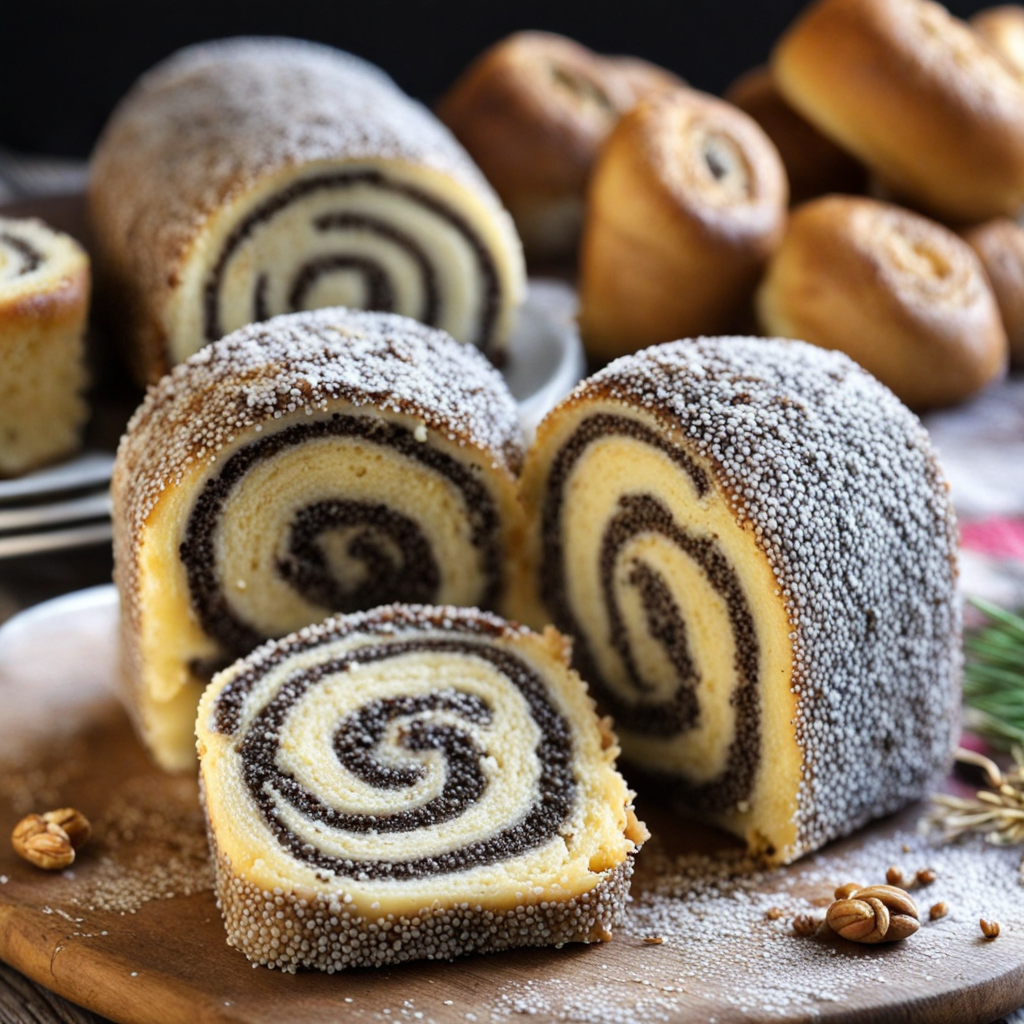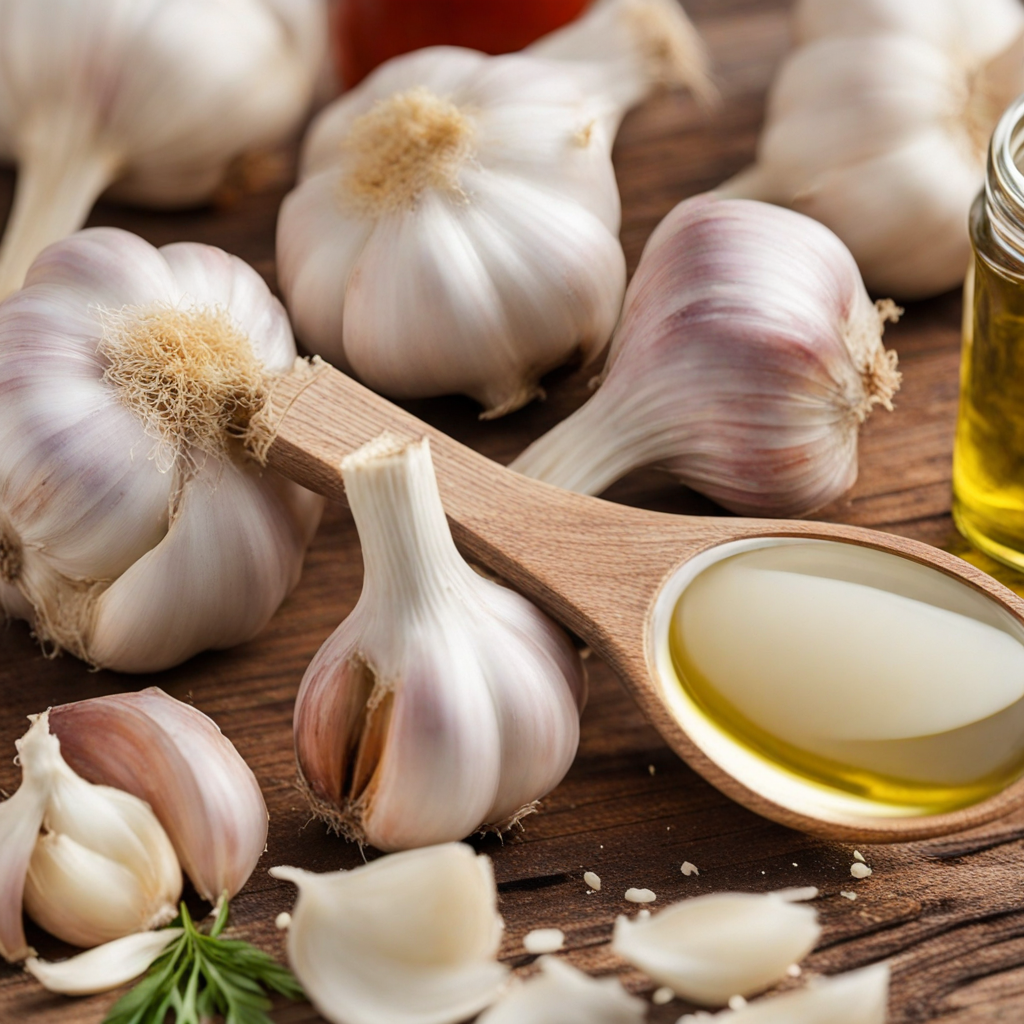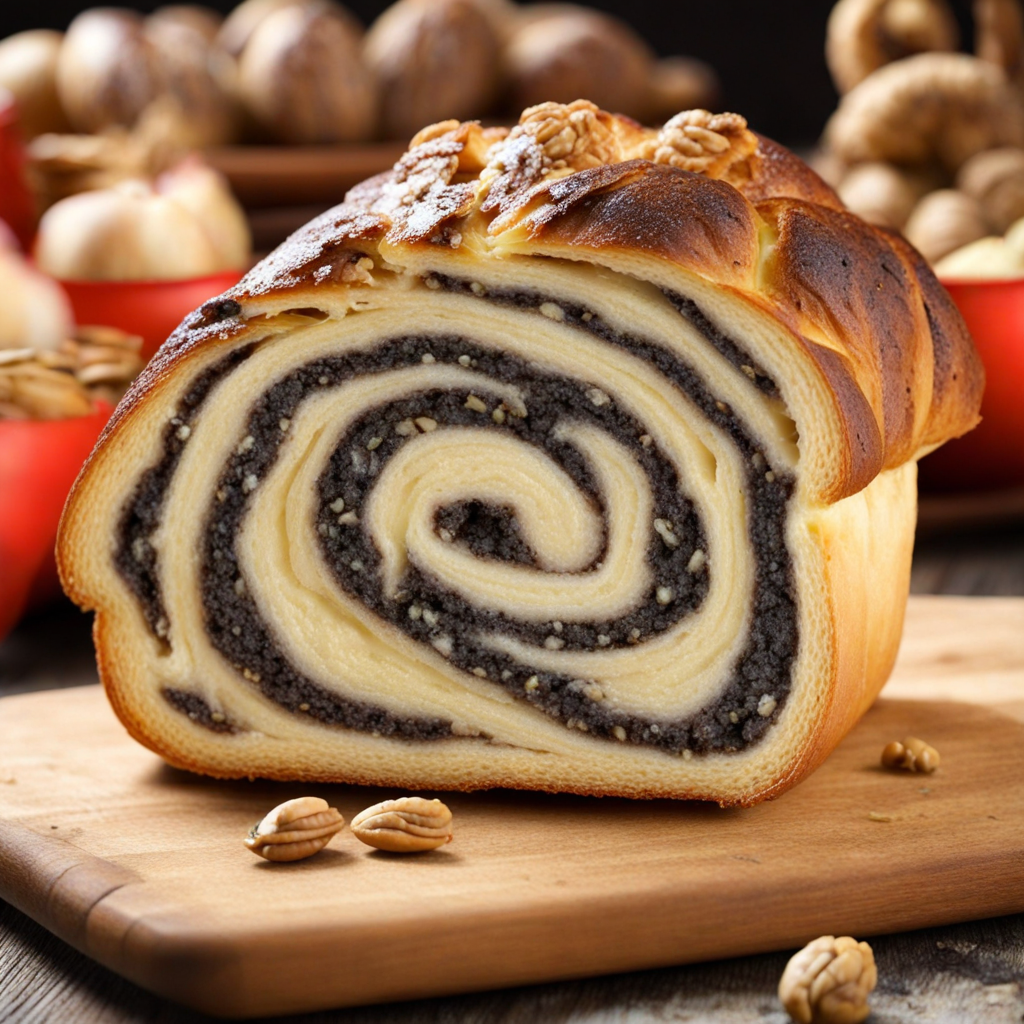Baigli
Baigli is a traditional Romanian pastry that embodies a delightful blend of textures and flavors, making it a must-try for anyone seeking a unique culinary experience. This rolled pastry is typically filled with either a sweet poppy seed or walnut mixture, which imparts a rich, nutty essence that complements the tender dough. The dough itself is light and flaky, offering a slight crispness that contrasts beautifully with the creamy filling, creating a harmonious balance in every bite. As you take a bite of Baigli, the initial crunch from the outer layer gives way to the soft, sweet filling that bursts with flavor. The poppy seeds lend an earthy, slightly sweet taste, while the walnut filling provides a more robust, buttery flavor. Often dusted with powdered sugar or glazed with a light syrup, Baigli can also have a touch of vanilla or citrus zest, enhancing its aromatic profile and making it an irresistible treat. The combination of these elements makes Baigli not just a dessert, but a sensory experience that transports you to the heart of Romanian culture. Traditionally, Baigli is enjoyed during festive occasions, particularly around Christmas and Easter, where it symbolizes abundance and good fortune. However, its delightful taste makes it a fantastic choice for any time of the year. Whether served as a sweet accompaniment to tea or coffee, or enjoyed as a standalone snack, Baigli offers a glimpse into the rich culinary heritage of Romania, inviting food lovers to indulge in its sweet, nutty goodness.
How It Became This Dish
Beigli: A Sweet Slice of Romanian Heritage Beigli, a traditional pastry that holds a cherished spot in Romanian culinary culture, is more than just a dessert. It is a symbol of celebration, tradition, and the rich tapestry of influences that have shaped Romanian cuisine over centuries. With its origins steeped in the complex interactions of various cultures, Beigli is a testament to the resilience and adaptability of Romanian culinary practices. Origins and Historical Context The roots of Beigli can be traced back to the Austro-Hungarian Empire, where culinary traditions intermingled, creating a vibrant melange of flavors and techniques. The pastry is believed to have been introduced to Romania by the Hungarian community, particularly in the regions of Transylvania, where both Romanian and Hungarian cultures coexist. The term "Beigli" itself is derived from the Hungarian word for "roll," which aptly describes the pastry's distinctive cylindrical shape. Traditionally, Beigli is made with a yeast dough that is rolled out and filled with either a sweet poppy seed or walnut filling. The choice of filling often reflects regional preferences and variations in family recipes. While the poppy seed filling is more common in the western regions of Romania, the walnut filling is favored in the eastern areas. The dough is usually enriched with butter, milk, and sometimes eggs, making it a rich and indulgent treat. Cultural Significance Beigli holds significant cultural importance, particularly during festive occasions such as Christmas and Easter. In Romanian households, the preparation of Beigli is often a communal activity, bringing families together in the kitchen. The process of making Beigli is not only about creating a delicious pastry; it is also about preserving family traditions and passing down recipes from one generation to the next. During the Christmas season, Beigli is often served alongside other traditional treats, such as cozonac—a sweet bread filled with nuts, cocoa, or raisins. The presence of Beigli at holiday celebrations signifies abundance and is associated with the joy of sharing food with loved ones. In this sense, Beigli transcends its role as mere sustenance; it becomes a vessel of cultural expression and familial love. Development Over Time As Romania has evolved, so too has the preparation and presentation of Beigli. In the early 20th century, the pastry became more widely appreciated beyond the confines of family kitchens. Bakeries began to offer Beigli during the holiday seasons, making it accessible to a broader audience. This shift marked a significant change in the way traditional foods were consumed and appreciated, as urbanization brought about new social dynamics. In the post-communist era, the resurgence of interest in traditional foods saw Beigli regain its prominence in Romanian culinary culture. The 1990s and early 2000s were marked by a revival of interest in heritage cooking, with many Romanians seeking to reconnect with their roots. This period saw the emergence of artisanal bakeries dedicated to crafting Beigli using time-honored methods and high-quality ingredients. Today, Beigli is not only a beloved holiday pastry but also a point of pride for many Romanian families. With the advent of globalization and the increased accessibility of international culinary trends, some bakers have begun experimenting with new flavors and fillings, including chocolate, fruit preserves, and even savory variants. These innovations reflect the dynamic nature of food culture, where tradition meets modernity. Recipe and Preparation The preparation of Beigli is a labor of love that requires patience and skill. The basic recipe calls for: Ingredients: For the dough: - 500g all-purpose flour - 200ml milk - 100g butter, softened - 2 tablespoons sugar - 1 packet of dry yeast - 1 egg - A pinch of salt For the filling (choose one or both): 1. Poppy Seed Filling: - 200g ground poppy seeds - 150ml milk - 100g sugar - 1 teaspoon vanilla extract 2. Walnut Filling: - 200g ground walnuts - 150ml milk - 100g sugar - 1 teaspoon vanilla extract - Optional: zest of one lemon Instructions: 1. Prepare the Dough: - In a bowl, combine the warm milk, sugar, and yeast. Let it sit for about 10 minutes until frothy. - In a large mixing bowl, combine the flour and salt. Make a well in the center and add the yeast mixture, softened butter, and egg. Knead until smooth. - Cover the dough with a cloth and let it rise in a warm place for about 1 hour or until doubled in size. 2. Prepare the Filling: - For the poppy seed filling, heat the milk in a saucepan, then stir in the ground poppy seeds and sugar. Cook until thickened and remove from heat. Add vanilla extract and let cool. - For the walnut filling, follow the same process as above, substituting walnuts for poppy seeds, and optionally adding lemon zest. 3. Assemble the Beigli: - Preheat the oven to 180°C (350°F). - Roll out the dough into two rectangles. Spread the desired filling evenly over each rectangle. - Roll the dough tightly into a log, sealing the edges. Place the logs seam-side down on a baking tray lined with parchment paper. - Brush with an egg wash (beaten egg) for a golden finish. - Bake for 30-40 minutes or until golden brown. 4. Cool and Serve: - Allow the Beigli to cool before slicing. Serve it as a festive treat or enjoy it with coffee or tea. Conclusion Beigli is more than just a pastry; it is a cultural artifact that embodies the spirit of Romanian hospitality and celebration. Its journey through history reflects the broader narratives of migration, cultural exchange, and the resilience of culinary traditions. Whether enjoyed at a festive gathering or savored as a personal indulgence, Beigli continues to unite families and communities, serving as a delicious reminder of Romania's rich culinary heritage. As we savor each bite, we partake in a long-standing tradition that connects us to the past, celebrates the present, and inspires future generations to cherish and uphold their culinary legacies.
You may like
Discover local flavors from Romania







